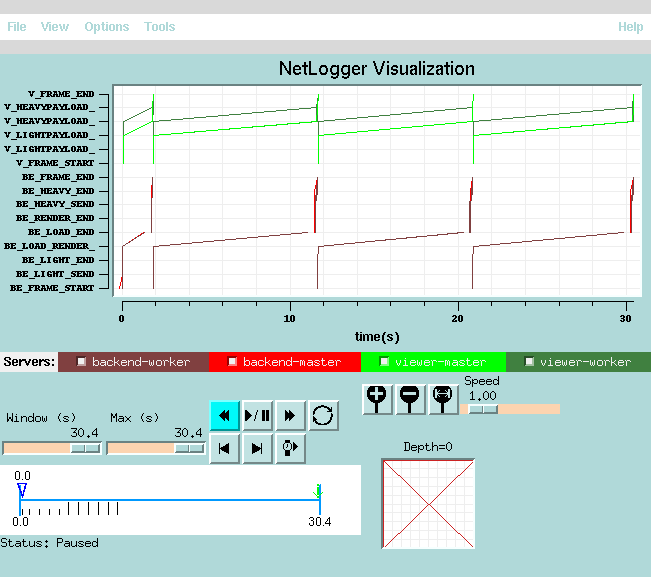22 Feb 2000
Description
In order to better understand performance issues, we instrumented the AMR-aware backEnd and did a run over four data files, producing the below image using the Netlogger vis tool.
Goals
By performing this test, we were able to verify the correct functioning of the 64 bit IRIX Netlogger client libraries (this had never been done before). Also, we set the stage for subsequent tests with the AMR back end by porting the Netlogger-wrapping components into the AMR backend.
Results
We performed a single run using 4-way parallelism on the backEnd. The backEnd host was an 8-processor SGI Onyx2 ~200Mhz R10000 CPUs. The viewer machine was a Sun Ultra60. The two machines are separated by a switched 100TX network.
The Netlogger results (below) show that the viewer consumes a significant amount of time loading data. Each timestep of data is a 256x64x64 AMR dataset consisting of 21 variables, each is on the order of 200Mbytes in size. The time required to load the first dataset is much less than the time for subsequent datasets as we had already read that one in on a previous run, so it was sitting in the disk cache.

What we learned from this exercise is that disk i/o is slow. We realized on the order of 20Mbytes/sec in disk i/o time from a single SCSI disk. Future versions and campaigns of Visapult must focus on better i/o into the backEnd. The i/o time dominates rendering and transmission to the viewer.